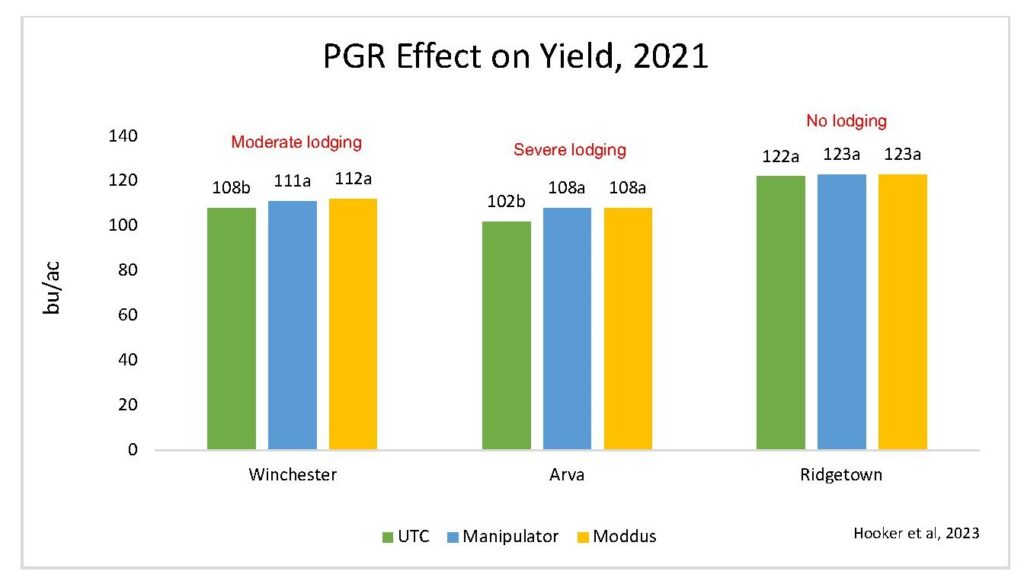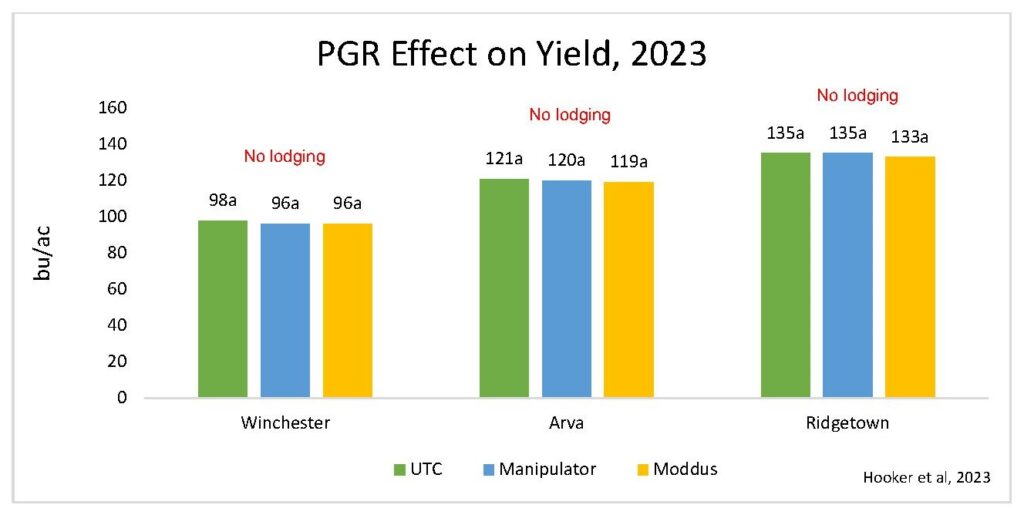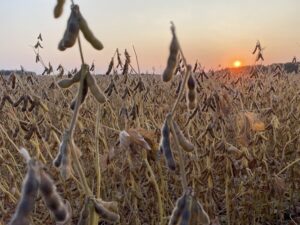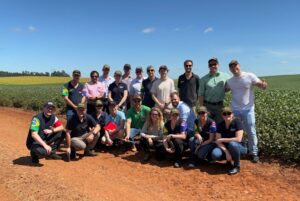PGRs in winter wheat
AGRONOMIC INFORMATION FROM ONTARIO'S CROP SPECIALISTS

PLANT GROWTH REGULATORS (PGR) ARE APPLIED TO WINTER WHEAT TO REDUCE PLANT HEIGHT AND INCREASE STEM THICKNESS. This reduces the risk of lodging or delays the onset and amount of lodging, making managing and harvesting wheat easier. PGRs can also improve yields, particularly where moderate to severe lodging occurs.
The decision to use a PGR includes variety selection; management, particularly the amount of nitrogen applied; and the seasonal growing conditions (temperature, rainfall, etc.).
A PGR will benefit most when the variety is prone to lodging or has a high lodging score. A variety’s lodging rating can be found at www. GoCrops.ca. There is high lodging potential when winter wheat is planted early and has a thick crop canopy (> 75 stems/square foot); the field has a history of manure applications or high soil organic matter levels; or when there is high yield potential and an intensive management program is used including early planting, high seeding rates, and aggressive nitrogen rates (150 pounds/acre).
The use of PGR has less value when the variety is not prone to lodging or has a low lodging rating. There is lower lodging potential when split nitrogen applications are used in conjunction with lower nitrogen rates; there is lower yield potential due to a late planting date, and significant tillering and growth are not a concern; high rates of manure are not used in current or previous years.

FIGURE 1 PGR effect on winter wheat yield at three locations in 2021 with no, moderate, and severe lodging. At locations with moderate to severe lodging, there was a significant yield benefit to a PGR application over the untreated check. All plots received 150 lbs/ac of nitrogen. Trials conducted by Hooker et al., 2021-2023.

FIGURE 2 PGR effect on winter wheat yield at three locations in 2023 with little to no lodging. All plots received 150 lbs/ac of nitrogen. Trials conducted by Hooker et al, 2021-2023.
In trials conducted by Dr. Dave Hooker, University of Guelph, Ridgetown Campus, between 2021 and 2023, there were varying yield and lodging score responses to PGR applications. In 2021, when there was moderate to severe lodging, there was a significant yield response to a PGR application compared to the untreated check (UTC) (Figure 1). Lodging scores were also significantly reduced by a PGR application compared to the UTC across all locations (data not shown).
In contrast, there was little to no lodging in 2022 and 2023, resulting in low yield responses in 2022 (data not shown) and no significant yield differences between the PGR treatments and UTC in 2023 (Figure 2).
Based on Ontario field research conducted to date, when there is a high risk of lodging, PGRs can be an effective tool for reducing or delaying the amount of lodging that occurs. Additionally, where moderate to severe lodging has occurred, PGRs can increase yields. However, when there is a low risk of lodging, you are unlikely to see value and an economic response. Therefore, various factors, including a variety’s response to PGRs, crop establishment factors (planting date, seeding rate, etc.) the nitrogen management strategy being used, both the rate and application method (single vs split apps), and field-specific characteristics (organic matter levels, history of manure applications, etc.) must all be considered when making PGR application decisions. •


























